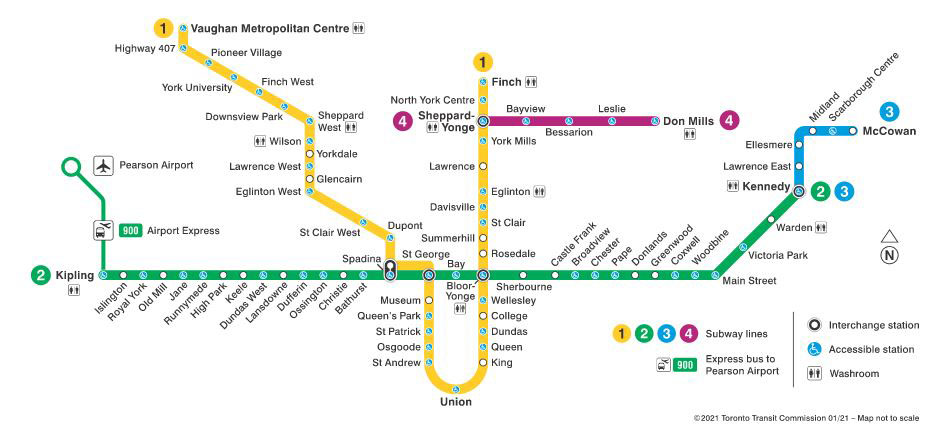Beginner Level
Only "Line 4 Sheppard-Yonge"
Assuming these SIMPLE conditions
- Only Line 4 Sheppard-Yonge!
- Only Biking as mode of commute
- Always begin at the first station. Eg. It is Sheppard for Line 4
- Only One-way trip (A to B), no backtracking
- No transfer stations
- For simplicity: Time duration is express in minutes and as whole numbers that’s no decimals.
No need to convert time to include hours, or seconds.
Intermediate Level
Assuming conditions
- Same conditions set in the Beginner-level
- Can choose either one mode of commute to begin: Biking OR Walking.
- No mixture of commuting modes on a trip.
